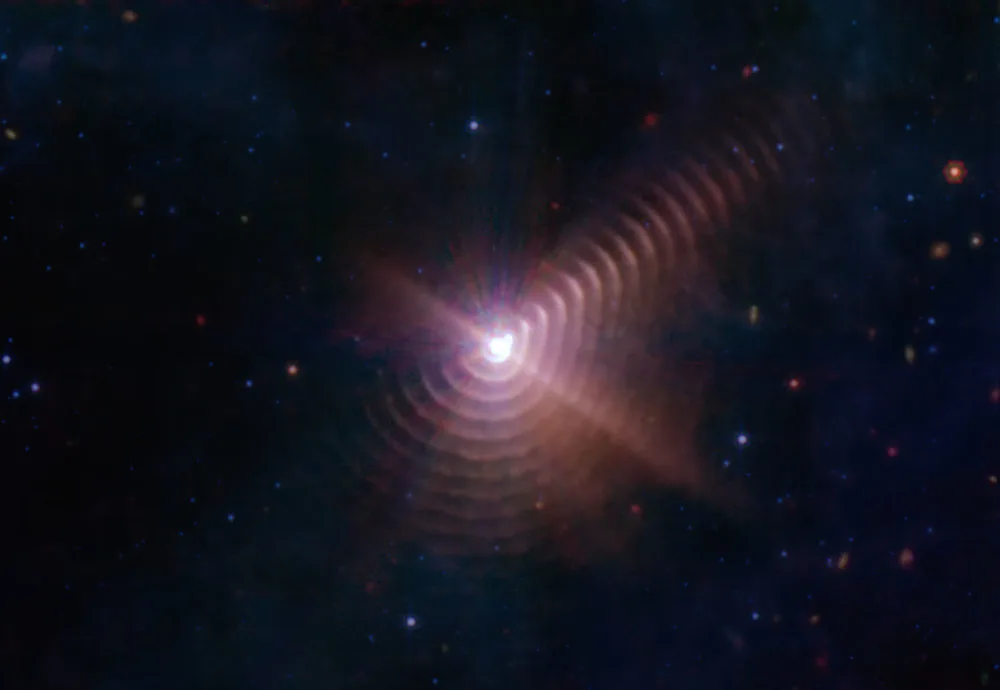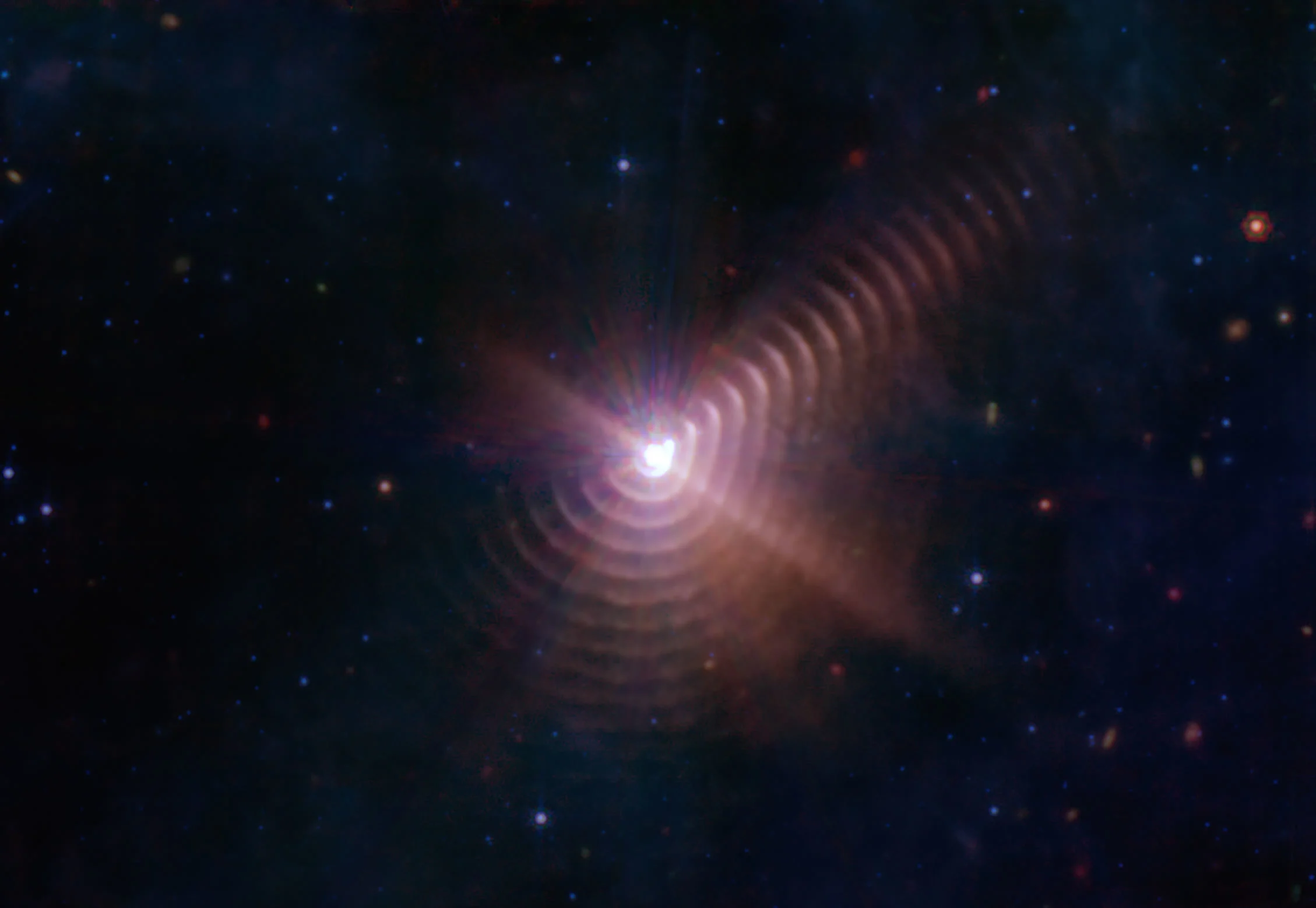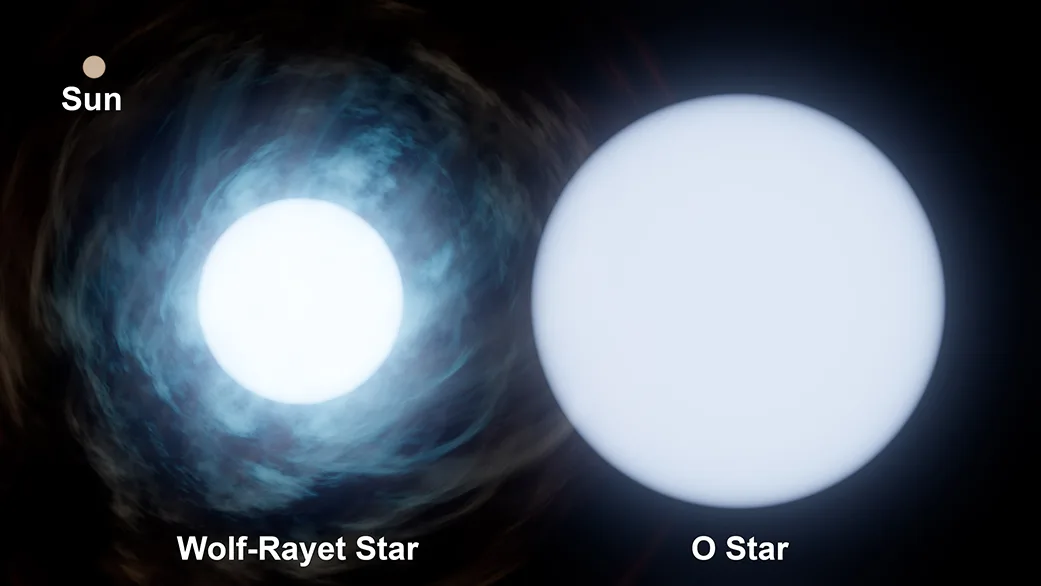
Webb Telescope spots cosmic fingerprint a century in the making
The new space telescope revealed a breathtaking view of the rings of dust swirling around a binary star that’s 5,000 light years from Earth.
NASA’s newest telescope spotted a celestial fingerprint a century in the making.
James Webb Space Telescope (JWST) recently peered deep into space to find a dazzling collection of dust rings rippling away from a pair of stars 5,000 light years from Earth, the agency announced last week.
DON’T MISS: Pow! JWST spots immense debris cloud from spacecraft’s collision with asteroid
The sheer number and near-perfect spacing of the rings stands out like a bright thumbprint against the vast backdrop of infinite darkness. JWST spotted 17 of these rings—many more than previous telescopes were able to detect.

NASA’s James Webb Space Telescope captured this image of 17 dust rings radiating away from a pair of stars known as Wolf-Rayet 140. (NASA, ESA, CSA, STScI, JPL-Caltech)
Wolf-Rayet 140 is a pair of stars that are both many times larger and more massive than our own Sun. This binary system consists of a Wolf-Rayet Star, which has 10 times the mass of the Sun, and an O Star, which is three times more massive than its orbital neighbour.
The smaller star ejects elements such as carbon in its stellar wind, which cools and turns into dust as it flows away from the celestial body. A chance quirk in this binary system’s orbit allows impressive rings of dust to radiate away from the duo.
WATCH: What are the differences between the Webb and Hubble space telescopes?
CHECK IT OUT: James Webb telescope reveals stunning new Jupiter views
The Wolf-Rayet Star revolves around its larger companion on an elliptical orbit. When the two stars come in close proximity to one another on this irregular orbit, their stellar winds—which include those dust-producing elements—collide and compress the dust into neat rings.

An illustration demonstrating the relative size of our Sun compared to the Wolf-Rayet Star and O Star that comprise Wolf-Rayet 140. The Wolf-Rayet Star’s elliptical orbit contributes to the formation of dust rings every eight years. (NASA/JPL-Caltech)
A new ring of dust forms each time the two stars pass close to one another, creating a rhythmic pattern every eight years that’s akin to the rings in a tree trunk, according to NASA’s release on the finding.
Previous telescopes were only strong enough to see two of these dust rings. But a powerful instrument aboard the JWST called the Mid-Infrared Instrument (MIRI) has the capability to sniff out a broader spectrum of infrared wavelengths, allowing this new telescope to see 17 rings rippling away from the pair of stars.
MUST SEE: Webb's first images spark awe and wonder about the universe
JWST’s latest finding is another gem in an already-impressive collection of achievements accomplished by the young space telescope.
The spacecraft took flight on December 25, 2021, and reached orbit 1.5 million kilometres away from Earth about one month later. NASA revealed the telescope’s first stunning images just over six months after its launch.
Thumbnail courtesy of NASA, ESA, CSA, STScI, JPL-Caltech
